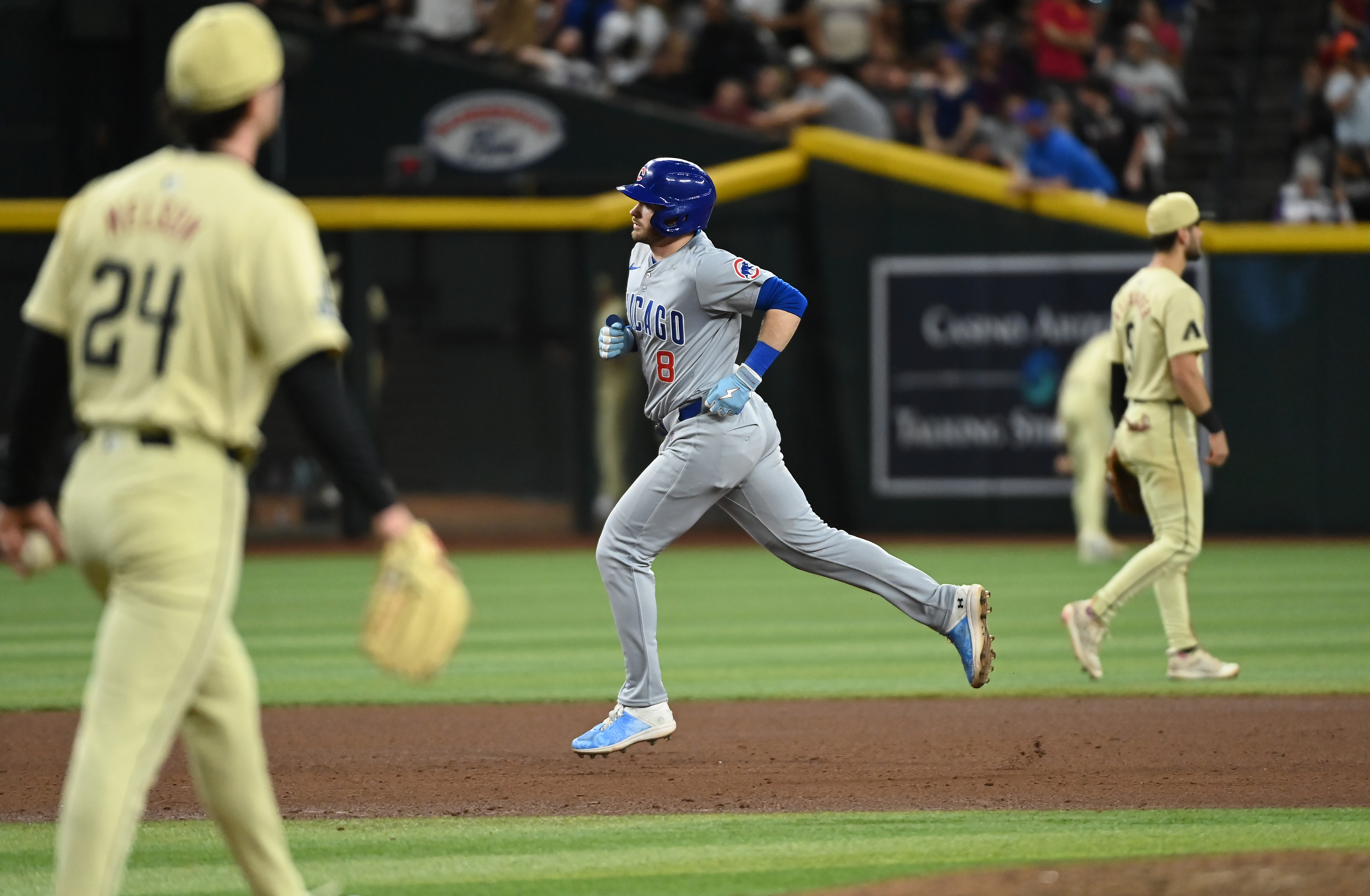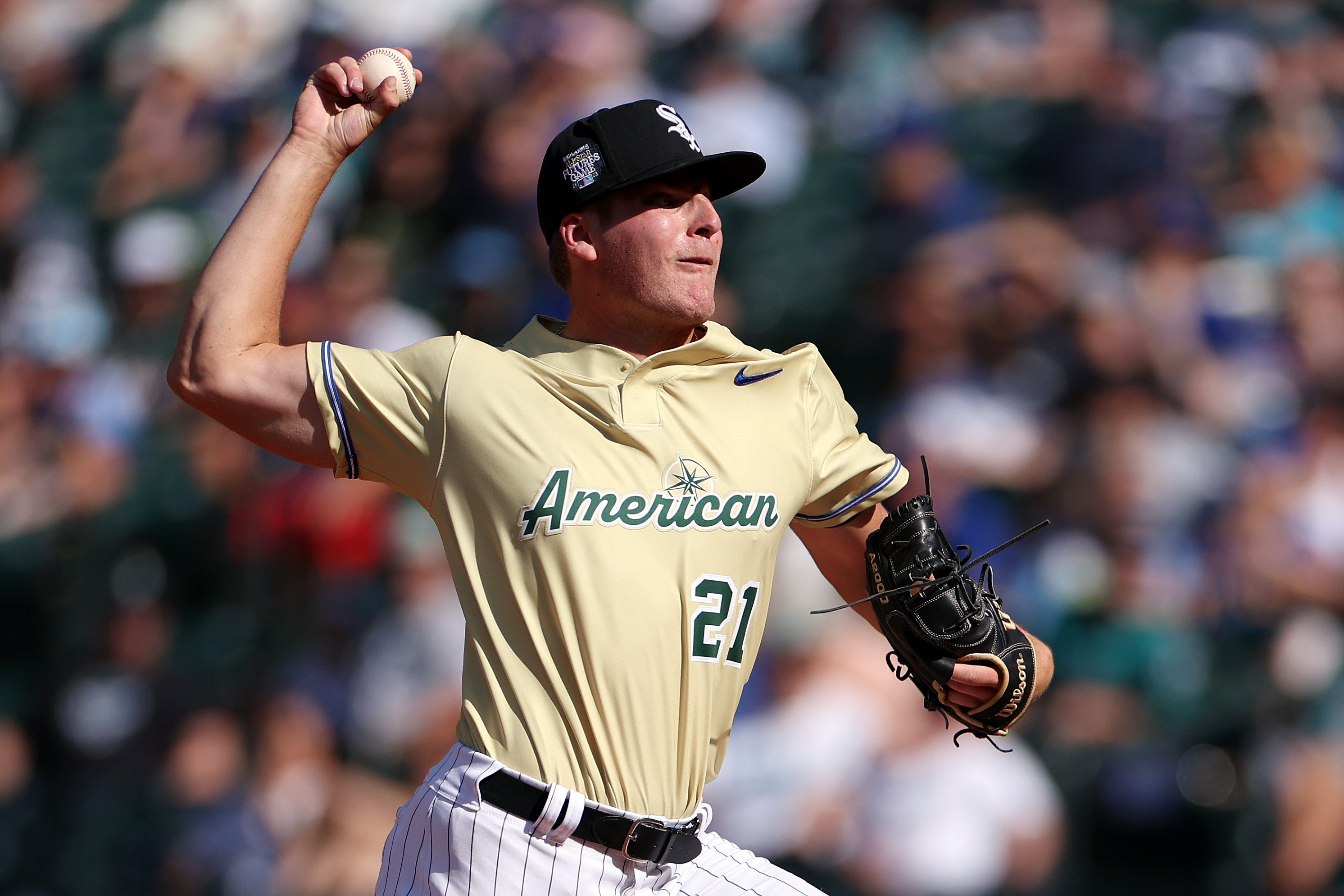The Cubs studied the architectural blueprints, renovating Wrigley Field in phases and trying to turn it into the Midwest version of Fenway Park. After years of rebuilding, this team now might have the American League-style offense that once transformed the Boston Red Sox.
Get ready for more commercial breaks, games approaching the four-hour mark and all those managers and pitching coaches walking back and forth between the visiting dugout and the mound. With “Go Cubs Go” playing at the end of the night in Wrigleyville.
The punting-on-2016-and-2017 Cincinnati Reds definitely aren’t the end-of-the-dynasty New York Yankees. But Theo Epstein’s front office certainly had Boston’s 2004 and 2007 World Series teams in mind while assembling this roster.
This lineup buried the Reds during Wednesday’s 9-2 win, scoring five runs in the first inning and knocking out Cincinnati starter Alfredo Simon after 49 pitches. The Cubs are now 7-1, have the best record in the National League and still get 36 more games against the Reds and Milwaukee Brewers, the division’s have-nots.
Simon – an All-Star in 2014 who put up a 5.05 ERA in 31 starts for the Detroit Tigers last year – got two outs before five Cincinnati relievers combined to throw 139 more pitches. Manny Ramirez is a hitting consultant for this organization, while Kevin Youkilis is an assistant in baseball operations, and that imprint of The Red Sox Way can now be seen in Chicago.
“Having a relentless lineup full of professional hitters works on so many different levels,” Epstein said. “It works in terms of just pure baseball reason: If you get on base, you’re going to score runs.
“It works psychologically, because you have a chance to become that team that no starting pitcher wants to draw. You saw the look on a couple of the pitchers’ faces (last week) when they had to face us as we got into the fourth, fifth inning.
MLB
“Their pitch counts go up and there’s a cumulative effect within the course of a game. You get second time through the lineup, third time through a lineup, then you get into their bullpen.
[SHOP: Gear up, Cubs fans!]
“There’s a cumulative effect during the course of a series. As you wear their bullpen down, they can’t go to their first options by the end of a series.
“And then there’s the cumulative effect over the course of a season, too, where you see so many pitches, have so many at-bats that you can wear down your opponents.”
The Cubs have outscored their opponents 56-20 this season, drawing 48 walks through eight games. That’s the cumulative effect of 286 losses between 2012 and 2014, a series of calculated decisions and some good fortune.
The Cubs traded for Anthony Rizzo – a former Red Sox prospect – before the 2012 season and helped him develop into a two-time All-Star first baseman who finished fourth in last year’s NL MVP voting.
The Cubs drafted Kris Bryant (homer, two walks on Wednesday) – whose dad had learned the science of hitting from Ted Williams as a minor-leaguer in the Red Sox system – with the No. 2 overall pick in 2013 and watched him emerge as last season’s NL Rookie of the Year.
The Cubs committed $253 million to the top three hitters in Wednesday’s lineup – Dexter Fowler, Jason Heyward and Ben Zobrist – after winning 97 games and two playoff rounds last year.
“You don’t want the pitcher to ever feel like he can take a break,” Heyward said.
Fowler – who has reached base safely in all eight games this season – is manager Joe Maddon’s you-go, we-go leadoff guy. Heyward won’t turn 27 until Aug. 9 – the day after Rizzo celebrates the same birthday. Zobrist waited to sign until the Cubs could make it work by trading Starlin Castro – a free-swinging hitter with unbelievable hand-eye coordination – to the Yankees at the winter meetings.
FanGraphs published an analysis piece on Wednesday that once would have sounded like a headline from The Onion: “This Cubs Lineup Might Be the Most Disciplined Lineup Ever.”
“Once you develop that reputation as a club, year after year, players come in and they tend to fit in with that profile,” Epstein said. “It’s been a process, because we were kind of on the other end of the spectrum as an offense for many years.
“We were pretty aggressive. We didn’t see a lot of pitches. We didn’t get on base a ton. It’s not something you can change overnight. But I feel like now it’s part of our culture.”


